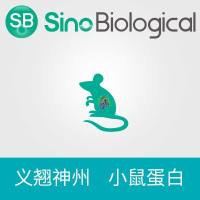Migration of Specific Leukocyte Subsets in Response to Cytokine or Chemokine Application In Vivo
互联网
互联网
相关产品推荐

MIF重组蛋白|Recombinant Mouse MIF / Migration Inhibitory Factor Protein
¥380

InVivoMAb 抗小鼠 CD274/PD-L1/B7-H1 Antibody (10F.9G2),InVivo体内功能抗体(In Vivo)
¥2700

MS4A1/MS4A1蛋白Recombinant Human B-lymphocyte antigen CD20 (MS4A1)-VLPs (Active)重组蛋白(B-lymphocyte surface antigen B1) (Bp35) (Leukocyte surface antigen Leu-16) (Membrane-spanning 4-domains subfamily A member 1) (CD antigen CD20)蛋白
¥3420

Recombinant-Low-calcium-response-locus-protein-DlcrDLow calcium response locus protein D
¥15036

CXCL9/MIG重组蛋白|Recombinant Mouse CXCL9 / MIG / C-X-C motif chemokine 9 Protein
¥1080
相关问答

